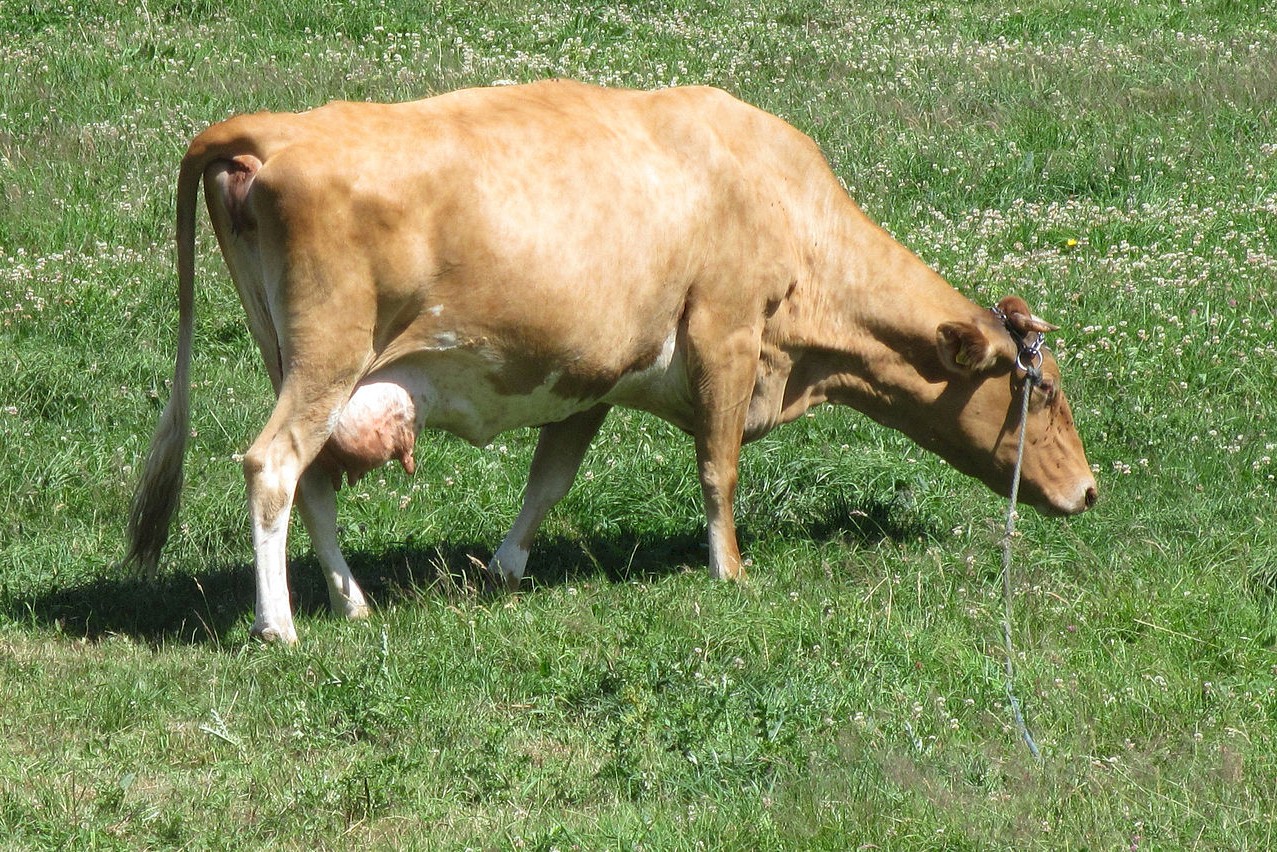Guernseys are dairy cattle from the island of Guernsey in the Channel Islands. Their coat is red or fawn (wheat-coloured), and may or may not be pied red-and-white or fawn-and-white. They are hardy and docile. Their milk is rich in flavor, high in fat and protein, and has a golden-yellow tinge due to its high ß-carotene content. The Guernsey is one of three Channel Island cattle breeds, the others being the Alderney ( now extinct), and the Jersey.
The Guernsey was bred on the Channel Island of Guernsey; they were first documented in the nineteenth century, and their origins are unknown. Cattle were brought to the island in the Middle Ages for drought work. It has been suggested that the Guernsey derives from cattle imported from the French mainland – brindled cattle from Normandy, and wheaten stock similar to the Froment du Léon of Brittany. There may also have been some influence from Dutch cattle in the eighteenth century.? During that century large numbers of cattle were exported from the Channel Islands to England; some of them had previously been brought from France.? Imports of French cattle to Guernsey were forbidden by law in 1819, but some importation of British cattle continued until 1877.? Some cattle evacuated from Alderney during the Second World War were merged into the breed.
Exports of cattle and semen were for a while an important economic resource for the island, and in the early 20th century, a large number of Guernsey cattle were exported to the United States. The Guernsey breed is on the watch list maintained by the American Livestock Breeds Conservancy, with fewer than 2,500 annual registrations in the U.S. and an estimated global population of less than 10,000 animals.
The Guernsey is of medium size: cows weigh 450 to 500 kg, and bulls 600 to 700 kg.
Content and Photo source: Wikipedia.org.
